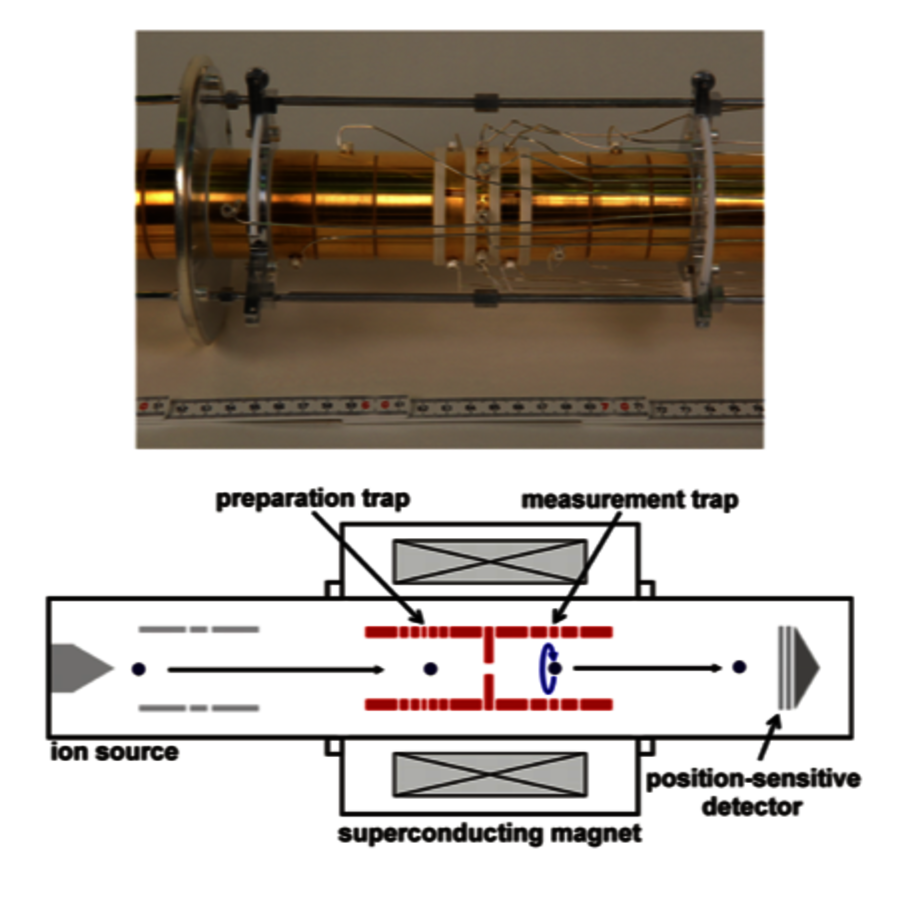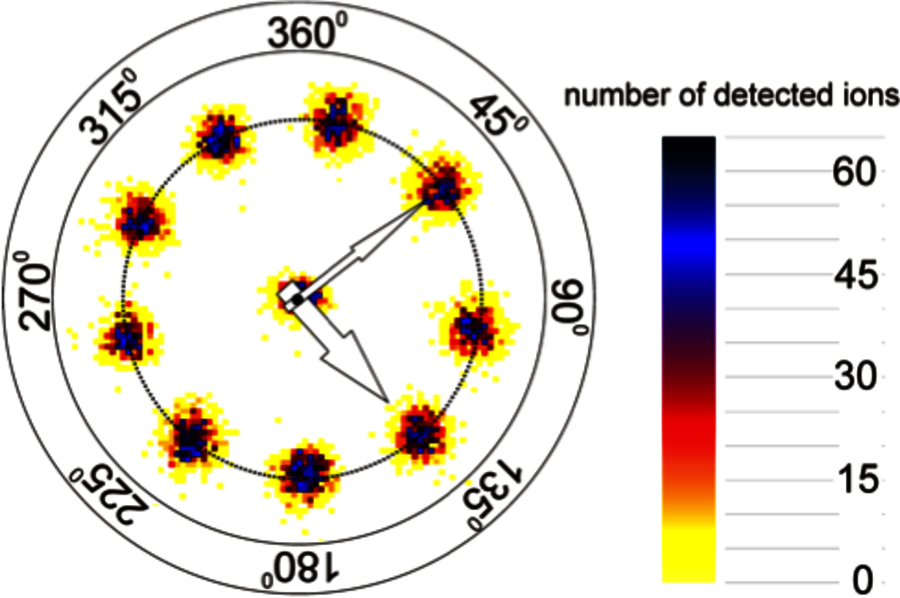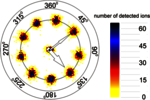A "phase clock" as high-precision atomic scale
26.04.2013 |
Imaging of rotating ions increases the precision of mass measurements of unstable nuclei.
Over the last years, precision mass measurements of atomic nuclei gained considerable importance for many fundamental questions in physics. An important issue is the stability of the nuclei determined by the binding energy. A particular challenge is the mass measurement of radioactive nuclides, which often decay within a blink of an eye after their production.
An established technique is the trapping of radioactive nuclides as single ions in Penning traps, as they will be used in the future MATS experiment at NUSTAR/FAIR. In principle, an ion is confined in a strong magnetic field, performing a cyclotron motion, and by a positive voltage applied to two opposite electrodes (Fig. 1). From a measurement of the rotation frequency the mass is obtained with high precision.
In case of short-lived nuclides there is only little time left to measure the rotation frequency. To this end, a novel method was recently developed: The radial motion of the ion is amplified by a radio-frequency field before the ion is imaged on a position sensitive detector. Depending on the time the ion rotates in the trap after a radio frequency pulse (start), typically some tenths of seconds, the position of the ion on the detector changes (stop) describing a circle like the hand of a clock.
The frequency of a clock is determined by the revolution time of its hand, for example one full revolution of the minute hand corresponds to one minute. More precise clocks have a second hand. In this experiment, this part in taken by the rotating ion itself – one only has to image the clock hand position, i.e., the phase of its radial motion. Fig. 2 shows the “clock face” on the detector for different stopping times.
This idea was now realized by members of the MATS collaboration at the SHIPTRAP facility at GSI (S. Eliseev et al., Phys. Rev. Lett. 110, 082501 (2013)). It leads to a 40-fold increase in the resolving power and a fivefold gain for the precision – a major breakthrough in precision mass spectrometry. Thus, the new technique measures masses with the same accuracy but 25 times quicker. Investigating two xenon isotopes with the mass numbers 129 and 130 they obtained relative mass precisions up to the ninth digit after the decimal point within some minutes.





